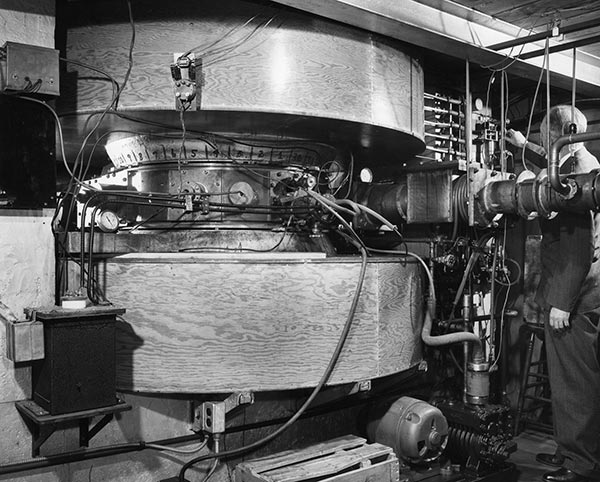The Cyclotron, affectionately dubbed the “Whirligig Atom Smasher”, was built in 1936 by P.G. Kruger and his students. The second cyclotron ever built in the United States, it accelerated particles through a series of “kicks” as they spun around in a spiral. This method was very different to the one employed by its cousin, the betatron, which instead gave the particles (mainly electrons) a continuous “push.” Also, unlike the betatron, the cyclotron used direct current instead of alternating current.
.jpg)
The Cyclotron was an immense machine. It weighed over 60 tons and, after combining all components, was “as big as a truck.” It required 150 kilowatts of power to run and could create a very large beam of agitated particles.

Today, most particle accelerators, such as the Large Hadron Collider, or LHC, are circular accelerators due to the early work of cyclotrons like the one at Univeristy of Illinois.
– Loomis Laboratory. Cyclotron parts are displayed in cases. Directions: the display is located in the northwest corner near the study tables.
Cyclotron. (n.d.). Research Laboratory Betatron Files. Record Series 11/10/12 Box 14, Folder Cyclotron Photographs, 1948-59. University of Illinois Archives.
Kerst, D. W. “Development of the Betatron and Its Place in Science”. From Talk Given at Dedication of Betatron, United States Army Arsenal, Picatinny, New Jersey, Record Series 11/10/12, Box 14, University of Illinois Archives.
Wildhagen, A. R. (May, 1943). The Betatron. Scientific American, Record Series 11/10/12, Box 14, University of Illinois Archives.
